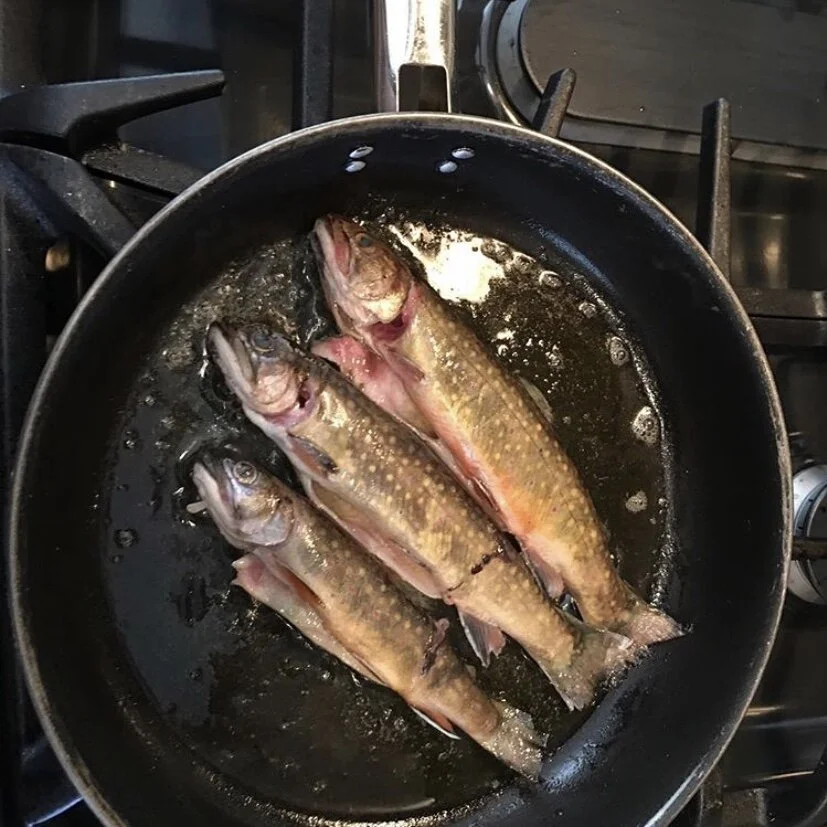You stumble your way down a dirt path careful not to trip over exposed roots. You can hear the water below but the stream is not yet visible. When you found this spot e-scouting you had no idea what sort of conditions this trickle of water had cut over the eons of its flow but as you break the trees you can see a promising riffle with some exposed boulders forming perfect eddies. You computer couldn’t have painted this picture in ones and zeros. Only Mother Nature and Father Time hold such brushes.
The assundry of flies most anglers have on their person at any given time is staggering. Just as in the world of mechanics or carpentry there is the correct tool for the job. Just like tools flies come in styles, patterns, and sizes. You, in time, will have “Go-to’s” and other flies that never see the water. There will be specific patterns for specific stretches of river or bodies of water. What always works is matching the hatch. This leads to the right tool for the right job.
The saying, ‘if all you have is a hammer then everything is a nail’, is true in fishing as well. If you open your fly box convinced you’ll be fishing a dry fly such as an Adam’s, you’ll never catch the trout that could be sucking in Stone Flies near the bottom.
By most opinions, the most fish are caught subsurface on a Nymph. Nymphing isn’t as fun as fishing a Dry or a Streamer, until they don’t produce and a Nymph does. When walking down the trail to the water, if you looked at my rod you would normally see a Nymph with an Indicator on my line. I will wait to see the water conditions to add shot if needed. I start with a Nymph because of its ability to cover water and that I believe Nymphs produce the most fish. Some of my favorite Nymphs are a Zebra Midge, Hare’s Ear, Bead Head Pheasant Tail, and a Stone Fly. Flip over some rocks and you’ll see nymphs clinging to them or in the area they just were. Find the fly you have that most closely imitates that size, shape and color.
Dry Flies shine a bit later in the season for the most part. If I know there is a hatch happening I will have a dry tied on to start. Remember hatches happen under certain time and weather conditions, so if you can base fishing times around them you will have a good reason to tie on a dry fly. I will also immediately use a dry fly if I have witnessed even one fish come to take a fly or any other insect off the surface. When you witness any sort of the dry fly triggers, again take note of the hatch or what the fish seem to be taking from the surface. Imitate that with your fly. If you look in my dry box you’d see a lot of sizes of a few flies. I use a lot of Parachute Adams, Blue Wing Olive, and my favorite Elk Hair Caddis. The latter will catch fish when stripped across a riffle like no other fly I have ever seen. Catching fish on a dry is a lot of fun so I take every opportunity to do so.
I tied these Zebra Midges, this is a great general purpose fly and it’s one of the few I tie on to start the trip.
Streamers are the fly that go against my general rule of thumb in fly fishing: less is more. With Dry Flies and Nymphs I start small and then move up in size. When throwing a Streamer I start with a hardy size bait and then move smaller if need be. Because I am targeting fish feeding on minnows, worms, and leeches, with Streamers I will often throw a big size like #4 or #2 so that the meal seems substantial. When fishing pools with Prime Lies I will often have a streamer tied on. I want a big fly to get deep down near the bottom, to catch those big trout that love that sort of area. If the water is known to have Brown Trout I will also throw a Streamer before anything else as Browns are known to be veracious carnivores. Woolie Booger, Egg Sucking Leeches, Freshwater Clousers, Jig Buggers, and Muddler Minows make up the majority of my Streamer selection. Many anglers would argue the Woolie Booger is the most versatile fly that has ever been tied- I would have a tough time arguing otherwise. You can weight with shot or get some sink tip line to maximize your Streamer fishing abilities. Your fly box is incomplete without a fair number of Streamers.
If you pick up a fly fishing magazine you will see the pages littered with photographs of fly boxes in the hand of the anglers and guides. The boxes will have a gratuitous number of flies and imitations bursting out of them. Some guides would sink if they fell in the water due to the weight of their fly boxes. This is fun, but not needed. If you want to be an effective fly angler, simply follow a list like this, fill your box with multiple sizes of a few select flies and go catch fish. Less is more and size matters more than color. No two bugs are exactly alike in nature, but if they are born of the same hatch they will vary less in physical size and shape than in hue. Hopefully this just saved you a few bucks and a lot of time and aggravation.





